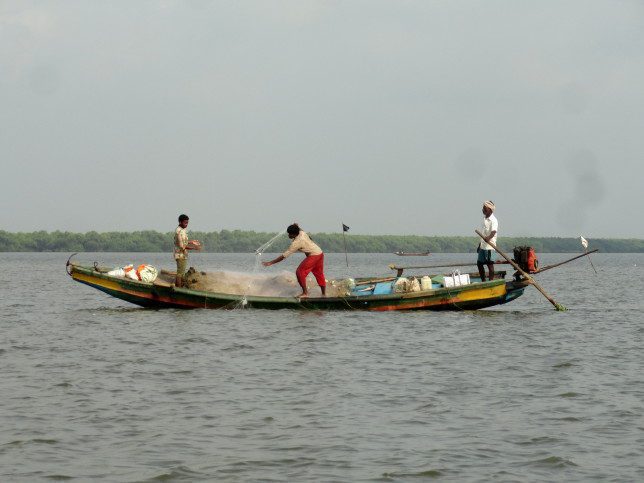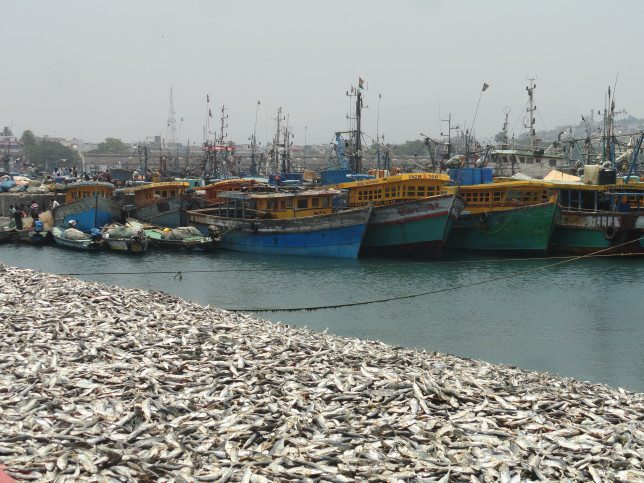By Dr Trevor Jones, Geospatial Analyst & Manager, Blue Carbon Science, Vancouver, Canada
Greetings from Vancouver where I write to you in the midst of recovering from my recent travels to the other side of the globe. I’ve just returned from coastal Vishakhapatnam, India, where I was representing Blue Ventures at the Across Landscapes: Conserving Coastal and Marine Biodiversity international workshop. This two day event, hosted by the Indian Ministry of Environment and Forests and the United Nations Development Programme’s (UNDP) Coastal and Marine Biodiversity Programme, brought together senior Government officials, scientific institutions, NGOs, private sector industries, and UNDP representatives. Delegates from various organizations and institutions outside of India with considerable coastal and marine biodiversity experience, such as Blue Ventures, were in attendance to present overviews of their work and participate in panel discussions.
After three flights and over 35 hours of travel, I arrived bleary eyed, hot and tired, but ready to take part in panels centred on two themes: enabling sustainable livelihoods and blue carbon resource conservation and utilization. The sustainable livelihoods panel brought Blue Ventures together for a lively discussion with Dr. Donna Kwan, the Secretariat of the Convention on Migratory Species – Dugong Memorandum of Understanding; Hari Ragavan, the Programme Manager of UNDP Indonesia; Y.S. Yadava, the Director of the Bay of Bengal Programme; and V. Vivekanandan of the South Indian Federation of Fishermen Societies. This informative session was chaired by Dr. P.R. Sinha, the India County Head of the International Union for the Conservation of Nature (IUCN). Despite my severe jetlag and fresh-off-the-plane appearance, the audience was keen to hear about Blue Venture’s experience in helping to facilitate sustainable livelihoods in Madagascar.

The vast mangrove forests of the Coringa Wildlife Sanctuary as viewed from the 19th century lighthouse
For the blue carbon session, I was joined by Dr. Ian Creswell from the Wealth from Oceans National Research Flagship, who has decades of expertise with Australia’s mangroves. This session was chaired by Dr. Jagdish Kishwan, a retired Indian Forest Service officer and former Director General of Forests in the Indian Ministry of Environment and Forests. Prior to his retirement, Dr. Kishwan helped steer REDD+ policy in India, making his statements on mangrove-based carbon credits well thought out and pertinent. Based on the questions and feedback from organizers and attendees, it was clear there is great interest in blue carbon projects in the region similar to our initiatives in Madagascar.
Following the workshop, we took an exciting and fast two hour drive down the coast to the Coringa Wildlife Sanctuary near the city of Kakinada. In the heart of this reserve is an old stone lighthouse, built by the British in the 19th century. From atop this lighthouse, during a 19th century storm, the total destruction of this area which then served as the region’s largest port was observed. A tsunami resulting from a cyclone wiped out everything but the lighthouse, claiming the lives of thousands in a matter of minutes. This storm not only resulted in the port having to be relocated and rebuilt, but made conditions favourable for the subsequent growth of thousands of additional hectares of mangrove forests.

Local fishers in Kakinada, India.
The Sanctuary, which was originally established in the late 1800’s, now contains the second largest stretch of relatively intact mangrove forests in India. These forests contain at least 15 mangrove and more than 120 bird species! As with elsewhere, in and surrounding the reserve, these mangroves face an increasing array of internal and external pressures, which is primarily due to the ever-expanding influence of human activities. Much of the internal pressure, which is more easily addressed, has to do with the livelihood needs of those who live in and around these ecosystems, such as local fishers. In addition, while its impact is currently unknown, the presence of a newly constructed massive oil and gas extraction and refinery facility (the region’s largest), literally on the edge of the reserve, is of particular note.
Before departing Vishakhapatnam, a visit to the city’s fish market helped contextualize all that had been discussed during the workshop. Beyond the beauty of the colourful Indian fishing vessels, I was taken aback by the sheer amount of sardines being harvested on a daily basis, which seemed to be a clear demonstration of increasing pressure being put on a local fishery.

The main port and fish market in Vishakhapatnam, India.
Though requiring a total of six flights and more than 70 hours of transit, overall, my visit to India was incredibly insightful and fruitful: I learned a great deal about Indian coastal and marine biodiversity and approaches towards conservation, and the relationships between government, industry and NGOs. I was also able to share Blue Venture’s experiences, with specific focus on community-centred conservation initiatives and assessing the feasibility of and working to implement blue carbon projects. Through my participation in multiple panels, I was also able to learn from and share ideas with several colleagues. This trip helped Blue Ventures expand upon existing collaborations and work towards building new ones in India. Having this opportunity to visit and learn about India and share Blue Venture’s experience working with coastal communities can hopefully help contribute towards similar initiatives throughout India and the region.
Blue Ventures would like to thank the Indian Ministry of Environment and Forests and UNDP for supporting this trip.

